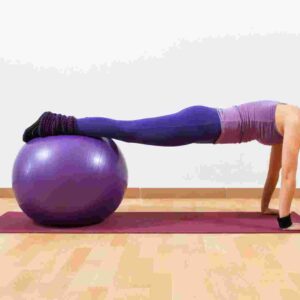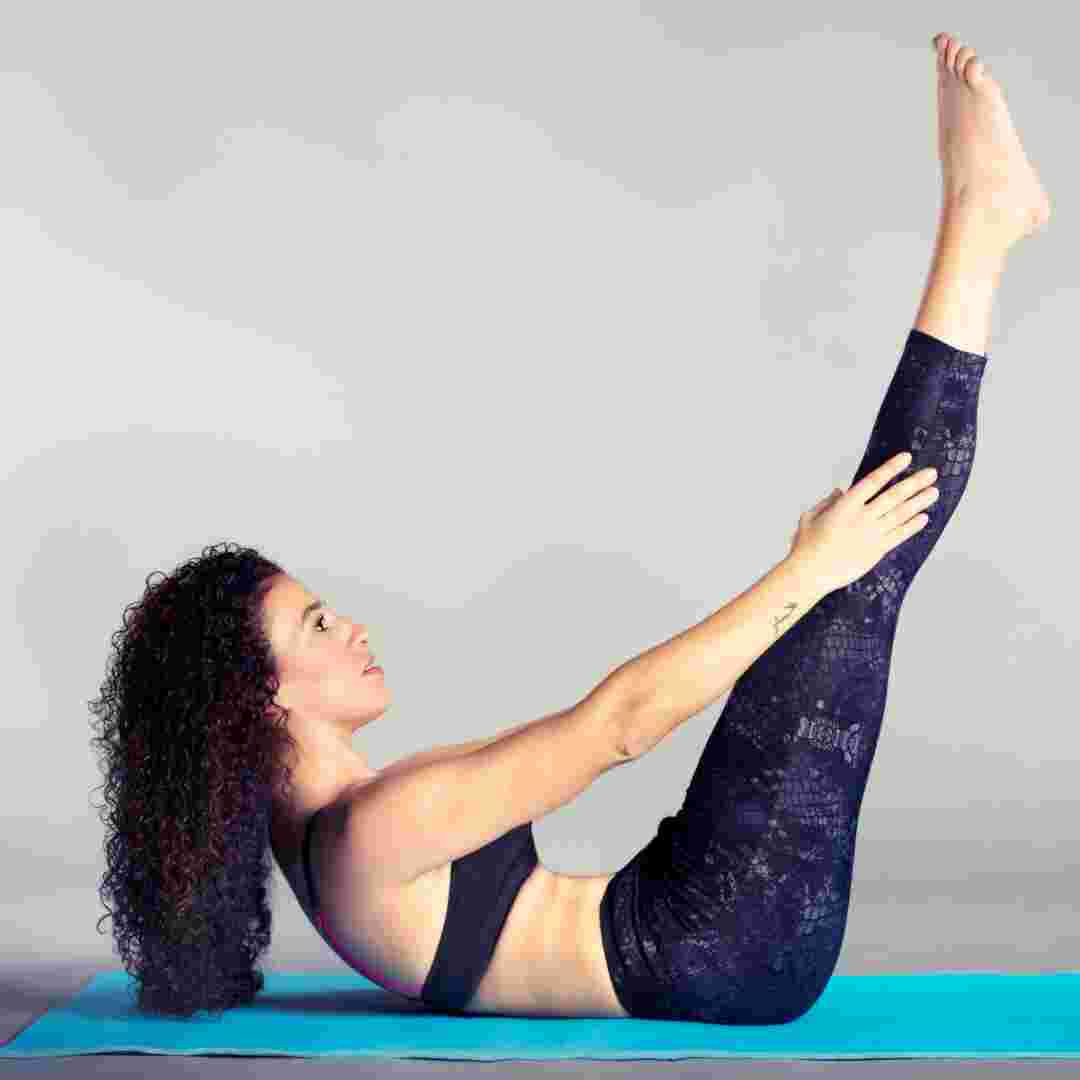Contents Table
Introduction
5 Essential Pilates Exercises for Home Full-Body Workout
Creating a Pilates Routine: Home Practise Tips
Pilates' Benefits: Why You Should Try It at Home
Q&A
Conclusion
"Transform your living room into a pilates studio with these simple tips."
Introduction
Introduction: Pilates is a low-impact workout that strengthens core muscles, improves flexibility, and aligns the body. Anyone can do it at home with minimal equipment and at any fitness level. Pilates at home and starting tips are covered in this article.
5 Essential Pilates Exercises for Home Full-Body Workout
Low-impact Pilates strengthens core muscles, improves flexibility, and improves posture. Best of all, you can do it at home to stay active and healthy. This post covers five basic Pilates movements for a full-body workout at home.
1. Hundred
Classic Pilates workout The Hundred addresses abdominal muscles. This workout requires lying on your back with your legs bent and feet flat. Raise your head, neck, and shoulders and stretch your arms in front of you. Pump your arms up and down while inhaling and exhaling five times. Ten sets equal 100 pumps.
2. Roll-Up
Another terrific core-building exercise is the Roll-Up. Start on your back with your arms over your head and legs straight out in front of you. Roll up one vertebra at a time until you're sitting up and reaching for your toes. Roll back to the start carefully. Ten times, repeat this workout.
3. Single-Leg Circle
Exercises like the Single Leg Circle enhance hip flexor flexibility. Rest your arms at your sides and legs straight up at the ceiling on your back. Keep one leg steady and circle the other clockwise five times. Switch to anticlockwise for five repetitions. Do that with the opposite leg.
4. The Swan
The Swan strengthens back muscles and posture. Lay on your stomach with your hands by your shoulders and elbows bent. Keep your hips and legs on the floor and lift your upper torso. Hold for five seconds and then descend. Ten times, repeat this workout.
5. The Side Plank
The Side Plank strengthens the core and obliques. Lay on your side with your elbow beneath your shoulder and legs straight. Hold your hips above the ground for 30 seconds. Repeat the drill on the other side.
In conclusion, Pilates is a terrific approach to stay active and healthy at home with a few basic exercises. The Hundred, Roll-Up, Single Leg Circle, Swan, and Side Plank are fantastic full-body workouts that target different muscle areas. Start cautiously and build up your workout intensity. Your strength, flexibility, and health will increase with regularity and effort.
Creating a Pilates Routine: Home Practise Tips
Low-impact Pilates strengthens core muscles, improves flexibility, and raises body awareness. Best of all, you can do it at home to stay active and healthy. Tips for a good home Pilates routine are covered in this article.
First, devote an area to Pilates. This could be a spare room, living room nook, or garden. Keep the space tidy and well-ventilated. Resistance bands, Pilates balls and weights are also needed, as well as a mat or comfortable area to practise on.
After setting up your environment, construct your Pilates routine. Start by creating practise goals. Want more flexibility, core strength, or stress relief? Once you know your target, you can customise your routine.
Start with the essentials while building your regimen. Pilates is about form and alignment, so start with the basics before going on to more complex movements. Pilates hundred, pelvic tilt, and single leg stretch are good starting exercises. These exercises strengthen your foundation and increase body awareness.
As you improve, you can add harder exercises. However, listen to your body and don't overdo it. Pilates is low-impact, although beginners may find it difficult. Take breaks and adjust the workouts to your fitness level.
A great Pilates routine requires consistency. Instead of a long weekly session, practise for a short time every day. Start with 20–30 minutes of daily practise and expand as you become used to it.
In addition to consistency, variation matters. Pilates includes many workouts for different muscle groups and body parts. Add Pilates rings and foam rollers to your regimen to spice things up. This will keep practise exciting and difficult, preventing boredom and burnout.
Finally, accountability and motivation are crucial. Stay motivated and inspired with a Pilates companion or online community. You can also track your progress with a journal or fitness app. Celebrate your wins and don't beat yourself up if you miss a day. Pilates is a journey, not a goal.
It's easy to practise Pilates at home to stay fit and healthy. Setting up a dedicated area, establishing a routine specific to your objectives and fitness level, practising consistently, integrating diversity, and staying inspired and accountable will help you build a successful Pilates practise that benefits your body and mind. Roll out your mat, breathe deeply, and let's begin!.
Pilates' Benefits: Why You Should Try It at Home
Low-impact Pilates strengthens core muscles, improves flexibility, and raises body awareness. A excellent way to stay fit and healthy, it can be done at home with little equipment. This article discusses Pilates' benefits and how to incorporate it into your at-home workout.
Improved posture is a major benefit of Pilates. Poor posture can cause back, neck, and other health issues. Pilates strengthens spine-supporting muscles, improving posture over time.
Pilates also improves flexibility. Many Pilates exercises stretch and lengthen muscles, improving range of motion and preventing injuries. Flexibility improves weightlifting and running performance.
Core strengthening is another benefit of Pilates. Your core muscles support your spine and pelvis and are vital for optimal posture and balance. Pilates strengthens these muscles, improving fitness and preventing accidents.
Pilates also improves mental wellness and reduces stress. Pilates requires focus, which helps cleanse your mind and relieve tension. Pilates can raise your attitude and energy, making you more productive and cheerful throughout the day.
Now that you know Pilates' benefits, let's talk about adding it to your at-home workout. You don't need pricey gym equipment to start Pilates because it can be done with minimum equipment.
First, lie on a comfy mat or towel. To spice up your workouts, buy a Pilates ball or resistance band. Many online resources provide free Pilates workouts, so you may easily pick one that works for you.
Pilates should be started cautiously and with perfect form. Pilates requires precise movements, so pay attention and prevent overexertion. You can progressively increase workout intensity and duration as you get used to them.
Overall, Pilates is a terrific way to stay fit and healthy at home with minimal equipment. Pilates improves posture, flexibility, core strength, and mental wellbeing. By adding Pilates to your home workout, you may increase your fitness and health. Start slowly and focus on form to reap Pilates' many benefits.

Q&A
1. What equipment do I need for home Pilates?
– You can do Pilates at home with a mat, but some exercises require resistance bands, Pilates balls, or weights.
2. How often should I perform home Pilates?
– For results, do Pilates 2-3 times a week. You can repeat it if you like.
3. Are there online home Pilates resources?
Yes, YouTube videos, Pilates apps, and online lessons are available for home Pilates. Find a reliable supplier and use good form to avoid harm.
Conclusion
Conclusion: Knowing the movements and perfect technique is essential for home Pilates. Beginner exercises should be done first, then more advanced ones. A mat, resistance bands and a safe, comfortable location to practise are also essential. Pilates at home requires consistency and attention.


